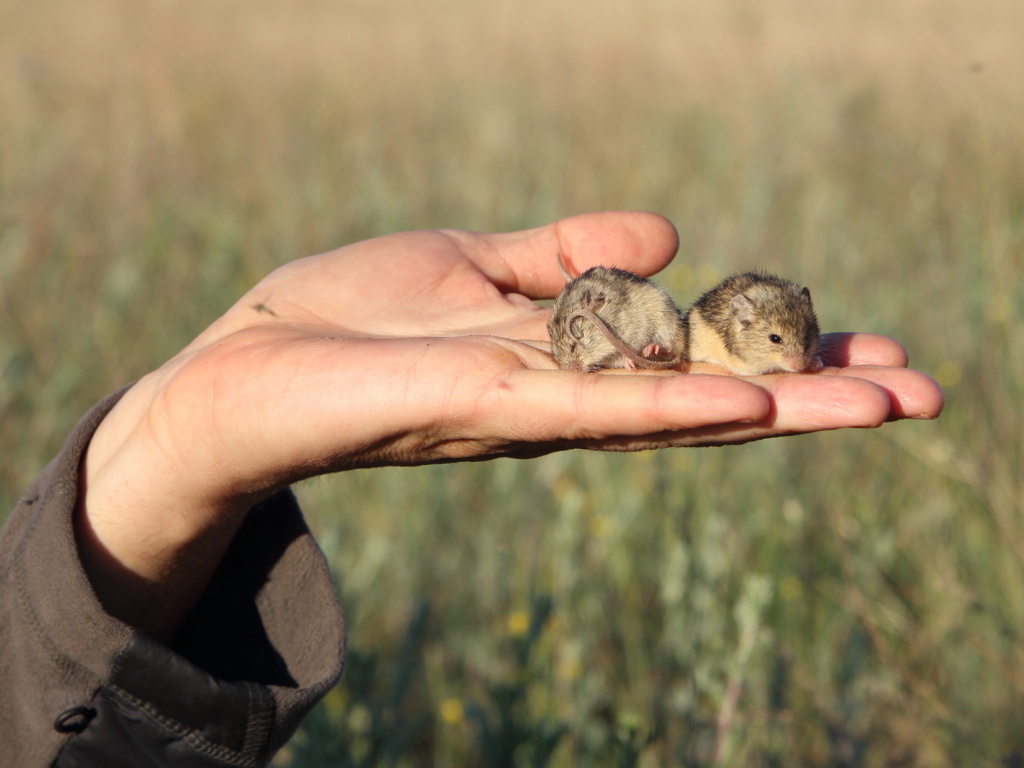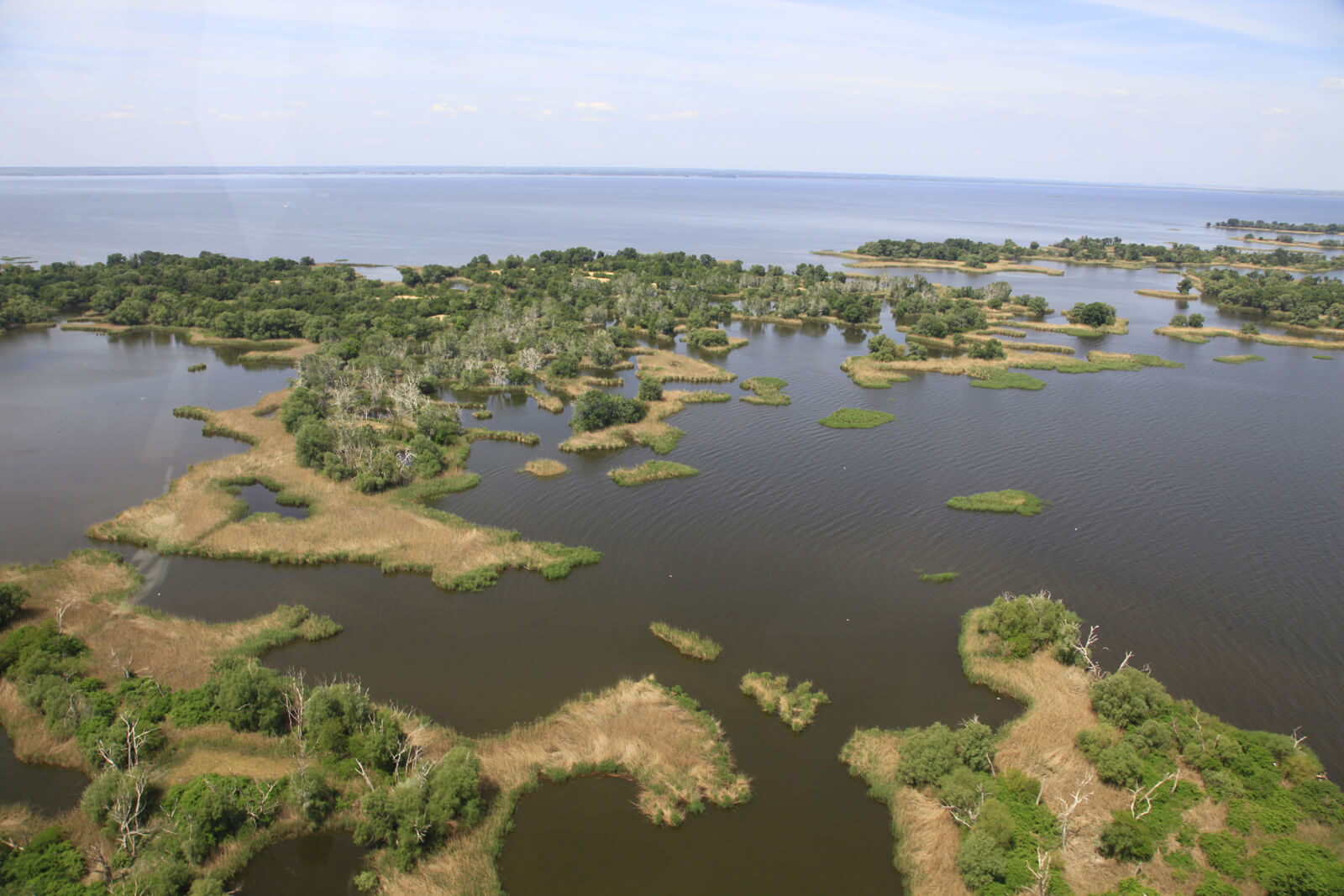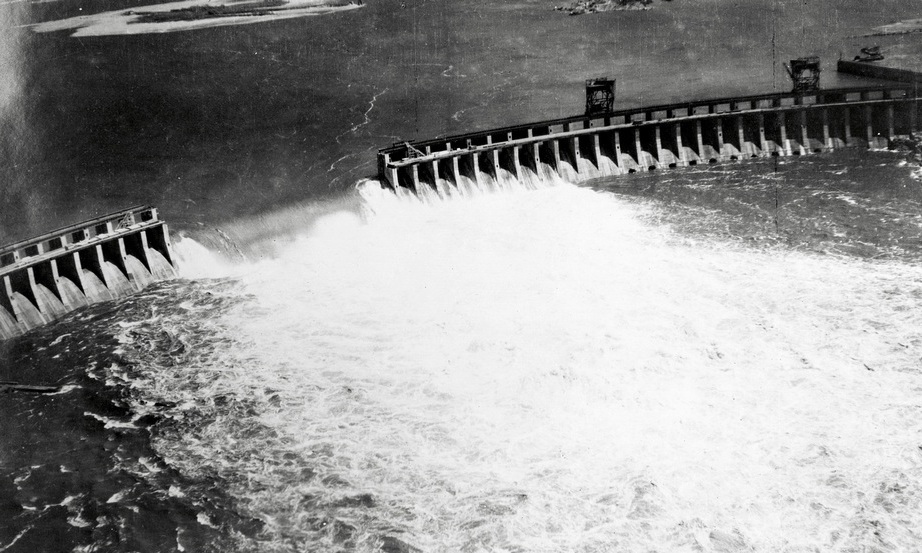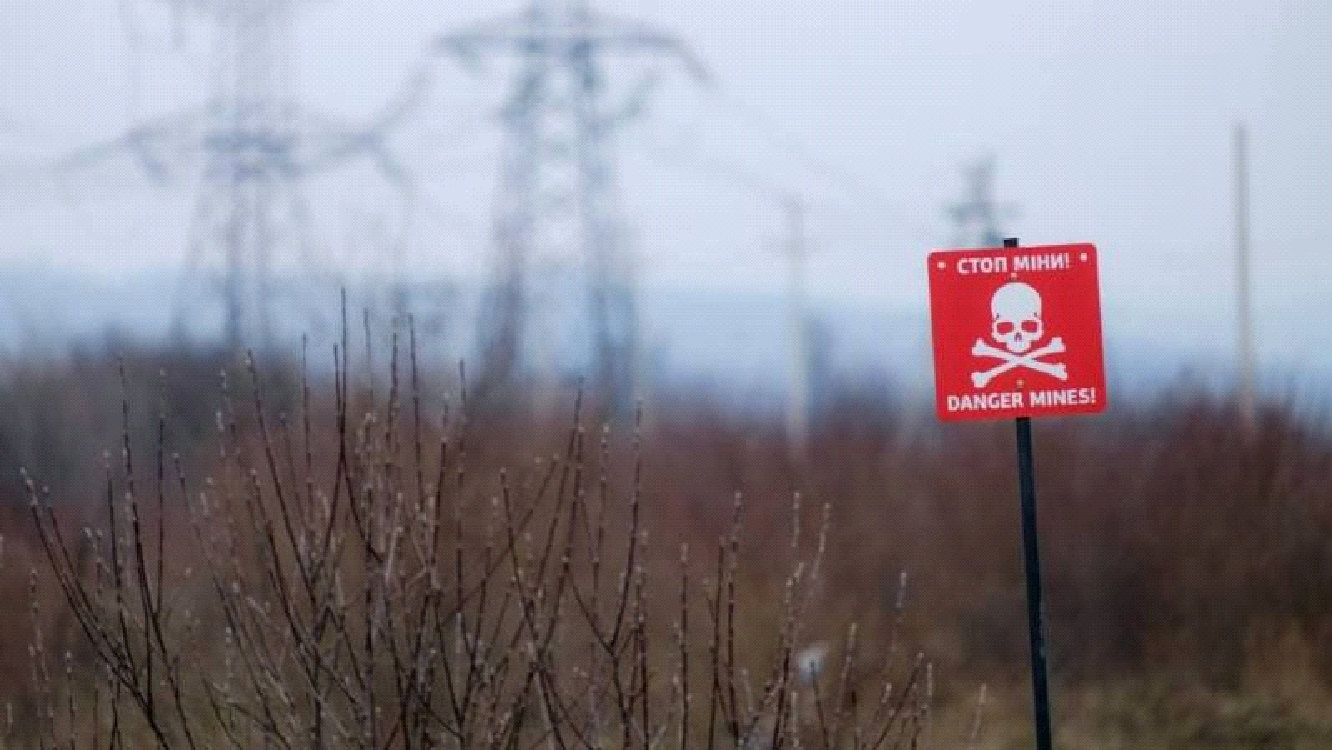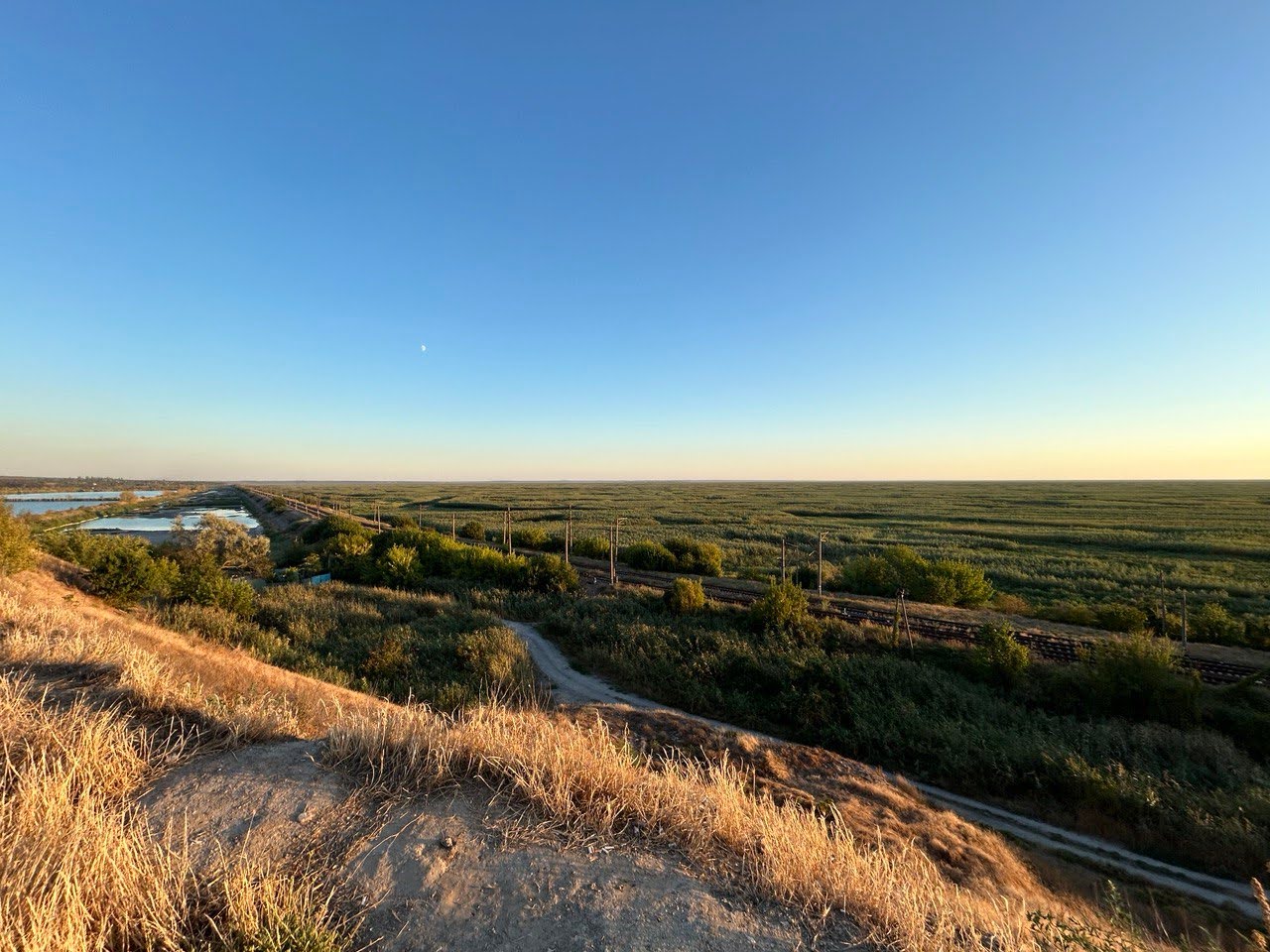Oleksiy Vasyliuk
For the first time, the IUCN European Red List has officially recognized military action in Ukraine as an extinction risk factor. After three years of all-out war, UWEC asks: just how serious is the threat to Ukraine’s rare species, and to what extent are population losses being overplayed by the media?
Since 2022, claims that the war has had an unprecedented impact on Ukraine’s biodiversity have frequently appeared in public spaces. UWEC Work Group has reported on several occasions how military action has placed the existence of entire populations under threat. In our publications, specialists have expressed concerns about the possible extinction of species in areas that have been worst hit by the war (for example, in the zone affected by the floodwaters of the Kakhovka Reservoir after the destruction of the hydroelectric dam).
In this article, we look at which species in Ukraine are seeing a population decline as a result of military activity and whether we can say that these species are under threat of large-scale extinction since the full-scale invasion.
Read more:
- Beyond the fog of war: deaths of the silent
- What does Russia’s war in Ukraine mean for global biodiversity conservation efforts?
- Threats of Russian invasion for protected small mammals in Ukraine
- 20 plants that could disappear because of Russia’s invasion of Ukraine
Since the beginning of the full-scale war, Ukrainian experts have taken part in the preparation of an updated European Red List for the International Union for Conservation of Nature (IUCN), in which military action is indicated for the first time as a factor in the deterioration of the conservation status of a number of threatened species. In particular, this concerns six species whose situation has been aggravated by the war and flooding after the dam of the Kakhovka hydropower station was blown up.
The list now includes the following species: the little ground squirrel (Spermophilus pygmaeus, now categorized as “Critically Endangered”), the speckled ground squirrel (Spermophilus suslicus, categorized as “Critically Endangered”), the great jerboa (Allactaga major, categorized as “Vulnerable”), the greater Egyptian jerboa (Jaculus orientalis, categorized as “Near Vulnerable”), the Podolsk blind mole-rat (Spalax zemni, categorized as “Endangered”), the sandy blind mole-rat (Spalax arenarius, also categorized as “Endangered”) and Nordmann’s birch mouse (Sicista loriger, categorized as “Critically Endangered”).
For Nordmann’s birch mouse, for example, data shows that the war has placed it on the brink of extinction—up to 70% of the world’s population of this species has potentially been wiped out since the destruction of the Kakhovka dam partly destroyed its biotope.
This assessment was made possible by the ongoing work of specialists in the conservation and study of the species. Although Nordmann’s mouse is found in various regions of Ukraine and several other countries, the bulk of the modern population is concentrated in the active combat zone in the south of the country.
This update to the list of vanishing species has an important global context: for the first time, the consequences of the war have been cited for Europe as a factor that creates the risk of extinction for several species at once.
In the past, the IUCN has also repeatedly studied the influence of military activity, primarily civil wars in West Africa and military exercises in countries with drawn-out conflicts. The 2021 IUCN report listed 219 species suffering from war, military maneuvers and destruction. Among them are “Big Five” species such as rhinos and elephants. But only a small proportion of species are considered endangered by the IUCN for military reasons. An example is the fate of gorillas in the Virunga National Park (Democratic Republic of Congo), which for many years suffered from the consequences of a never-ending civil war.
Unfortunately, the IUCN Red List website does not have a separate classifier for direct military influence, but only a general category (“6.2 – War, civil unrest & military exercises”) that includes the movement of refugees and other indirect factors. In total, the database includes 441 species, 34 in connection with the Yugoslav wars of the 1990s. Military impact is considered for only a few species, primarily gorillas in the Virunga reserve. The conclusion is clear: the international red list requires significant updating, including clarification of the factors threatening species.
| The Virunga National Park in the east of the Democratic Republic of Congo is a unique example of how nature conservation can be conducted in the shadow of a long-running armed conflict. Since the end of the 1990s, park employees—specially trained and armed rangers—have been effectively engaged in a state of continuous war with rebel groups and criminal gangs that are active within the boundaries of the park. These groups control the mining of coal, illegal logging and poaching, and often use the park as a refuge. More than 200 rangers have been killed since 1996 while protecting Virunga not only as a nature site, but also as a symbol of law and order in a region where state power is weak. |
It is common practice in conservation science and management that a species is considered extinct once it has not been seen for 50 years. According to the qualifiers applied to the IUCN Red List, (IUCN Red List Categories and Criteria, version 3.1), a species is considered extinct (Extinct, EX) only when there is no longer any reasonable doubt that its last representative has died and exhaustive searches of known and potential habitats during the relevant period have yielded no results.
However, it is often extremely difficult to verify the disappearance of a species. In the vast majority of cases in Ukraine, for example, natural areas known to have previously been home to populations of endangered species remain in occupied territories or in the combat zone. And scientists’ access to them is often limited by minefields.
For the past three years, it has been almost impossible to obtain evidence of the extinction or survival of a given species in areas affected by military action, since in general the frontline continues to advance towards Ukrainian positions. While it is possible to make a fairly objective assessment of the physical damage inflicted upon areas where rare species were previously known to have been found, alongside a comprehensive assessment of the military factors that worsen the impact of the economic factors already studied (plowing, mining, controlled burning, hunting, etc.), little more can be done than to compile lists of species whose situation has probably worsened and whose numbers have probably decreased. Unfortunately, in most cases, it is not yet possible to obtain empirical evidence of damage to populations, and especially to species as a whole.
Extinct according to the media
Public organizations and professional scientists have repeatedly spoken about the extinction risk the full-scale invasion poses to some species. However, the media have often overplayed this risk by resorting to more exaggerated language, referring to the “extinction” of species instead of the “risk of extinction of local populations.” One of the species whose extinction was considered most likely was the sea zander.
Sea zander
The news in 2023 of the probable extinction of the sea zander (Sander marinus) – an extremely rare fish species, found in Ukraine’s marine waters – had a huge impact. The sea zander is such a rare species that it was only found every few years in the waters of the Dnipro-Buh estuary, on the salinity border between the freshwater estuary and the open sea. The huge volumes of water released by the Kakhovka disaster apparently desalinated the sea zander’s entire habitat in the Dnipro-Buh estuary. Specialists from the Institute of Hydrobiology of the National Academy of Sciences of Ukraine say that this population has been lost. However, the panic over the “loss” of the species has gradually subsided, with sightings recorded beyond the zone of influence of desalination, as well as outside Ukraine and the Black Sea.
The extensive desalination and mass pollution of the northwestern part of the Black Sea caused by the Kakhovka dam disaster had an extremely negative impact on biodiversity. Scientists recorded a mass die-off of mussels and many other marine organisms, which had gathered in this specific area for breeding purposes at the time of the disaster. However, that issue generally concerns species with abundant populations that have seen a significant reduction in numbers, rather than the threat of extinction as such.
Read more:
- Black Sea heals its wounds: 4 months after the Kakhovka catastrophe
- Two years after the Kakhovka Hydropower Plant’s destruction: environmental consequences and the need for strategic decisions
Danube crested newt
A popular example is the die-off of a significant population of the Danube crested newt (Triturus dobrogicus), which inhabits the Dnipro delta. These newts were washed into the Black Sea by the floodwaters that surged downstream after the dam of the Kakhovka hydropower plant was blown up.
| The inundation of floodplain areas below the Kakhovka dam and the powerful flow of water toward the Black Sea caused a mass “washout” of amphibians and reptiles that are not adapted to salt water. A well-documented example is the suffering inflicted on the unique population of the Danube crested newt (Triturus dobrogicus), listed in the Red Book of Ukraine. Hundreds of dead newts were discovered along the shores of the Odesa region and Romania, which testifies to the great damage for the population. Some newts were saved by local residents and staff of national parks. No fewer than 149 animals were saved in total. After rehabilitation at Odesa Zoo, they were released back into the Dnipro by specialists from the Ukrainian Herpetological Society. According to observations, however, some of the surviving animals were taken home by local residents as pets, and in some cases people collected the bodies of sun-dried newts as grim “souvenirs” of this environmental catastrophe. Photographs of dead newts on the beach and sandy spit of Tuzlivski Lymany National Nature Park have become one of the visual symbols of the destruction of nature during the Russia-Ukraine war. Source: Staroverova Olena, Tuzlivski Lymany National Nature Park |
In fact, the extinction of the Danube crested newt has never been a realistic possibility, even though such remarks have appeared on social networks. However, there is a likelihood of the disappearance of a local Danube crested newt population that lived in the Dnipro delta at a great distance from its main habitat. Members of this population were found on the beaches of the Odesa region in the aftermath of the destruction of the Kakhovka hydropower station.
Sandy blind mole-rat and Nordmann’s birch mouse
Following the destruction of the Kakhovka hydropower station, there were reports about the likely disappearance of Ukraine’s two rarest mammals, the sandy blind mole-rat (Spalax arenarius) and Nordmann’s birch mouse (Sicista loriger). The habitat of these species, which have an extremely limited distribution, is particular types of sandy and ravine landscapes, some of which were flooded as a result of the disaster. The initial estimates of losses were made based on a comparison of the latest cadastral data of locations where the mammals had been found with flooded zones identified from satellite images. According to various estimates, up to 50% of known sandy blind mole-rat colonies and up to 70% of the entire world population of Nordmann’s birch mouse could have been destroyed.
In this particular case, we are clearly not dealing with the complete disappearance of these species. Firstly, some areas were not directly affected by the disaster, but are inaccessible due to minefields and ongoing fighting. Secondly, the estimates are based on assumptions, not on fieldwork—not a single comprehensive expedition to the remaining fragments of their habitats has yet been conducted.
These two mammals were, however, among six species for which the 2024 IUCN European Red List update named military action as a major factor in the deterioration of their condition for the first time.
Incidentally, during a 2023 expedition, Nordmann’s birch mouse was found in the Yelanets Steppe reserve in the Mykolaiv region, meaning that additional research may well allow us to discover new, previously unknown populations of the species and ensure their protection.
Black Sea dolphins
One of the highest-profile impacts on biodiversity as a result of the full-scale invasion was the harm it has caused to marine mammals: the Black Sea’s dolphins.
The Black Sea is home to just two types of dolphin—the bottlenose dolphin and common dolphin in small numbers—as well as the harbor porpoise. In addition to fighting at sea and the destruction of the Kakhovka dam, marine mammals were also harmed by the recent oil spill in the Kerch Strait, which is the most important part of the Black Sea for cetaceans. Back in summer 2022, reports of the death of “tens of thousands” of dolphins appeared in the media, provoking an emotional reaction among both the expert community and the general public. However, estimates of the death toll varied widely, ranging from 2,000–3,000 to 50,000.
Read more:
According to data collected by international experts and organizations, including ACCOBAMS (Agreement on the Conservation of Cetaceans in the Black Sea, Mediterranean Sea and Contiguous Atlantic Area), the number of recorded dolphin bodies washed up on the shores of Bulgaria, Romania, Turkey and Ukraine exceeded 2,500 individuals by the middle of 2022. However, a number of experts believe that for every corpse washed up on the shore, between 10 and 20 remain go undocumented. Thus extrapolated, death estimates reach the tens of thousands.
Ukrainian experts, including Ivan Rusev, a researcher at the Tuzlivsky Lymany National Park, put the figure at up to 50,000 dead individuals, based on the scale of military activity and acoustic pollution. Unlike the pre-war years, when the principal cause of dolphin deaths was entrapment in fishing nets, in 2022 most of the carcasses autopsied showed signs of injuries characteristic of acoustic shock: damage to the inner ear and lungs, as well as complete disorientation.
ACCOBAMS has already initiated a project for year-round acoustic monitoring of the status of marine mammal populations, in which Ukraine, Romania and Bulgaria are participating.
For these reasons, despite the clamor around the assessments, there are no actual grounds to declare the extinction of Black Sea cetaceans. However, without access to complete data and in the absence of long-term monitoring, there is a risk of the loss of individual subpopulations, while the ecosystem as a whole may suffer from degradation.
New candidates for extinction?
That said, it is quite likely that some species have become extinct as a result of the full-scale war. Six species belonging to one of the major groups of crustaceans (Malacostraca) listed in the Red Book of Ukraine are found in the combat zone. These species are typical of both the Dnipro-Buh estuary and the Lower Dnipro floodplains.
Scientists are particularly interested in two species of gammarus (a tiny amphipod crustacean genus in the gammaridae family), Lanceogammarus andrussowi and Shablogammarus shablensis, both endemic to the Ponto-Caspian region, as well as Pontastacus pachypus — Europe’s rarest freshwater crayfish, whose entire population outside the Caspian Sea is concentrated in the zone of influence of the Kakhovka catastrophe. There is a possibility that this species lived exclusively in the vicinity of the Kakhovka hydropower station and at the mouth of the Ingulets river, preferring rocky areas with a strong flow. Mykhailo Son, a senior research fellow at the Institute of Marine Biology at the National Academy of Sciences of Ukraine, told the Livyi Bereh newspaper in an interview that this species is sensitive to oxygen content, and its habitats could have been silted up and destroyed by pollution caused by the destruction of the dam.
In addition to these species, at least ten other freshwater organisms known to be found only in the Dnipro delta and the Dnipro-Buh estuary in Ukraine, remain in danger, since their habitat has been significantly altered. However, it will only be possible to return to the question of the survival of these species after the liberation of the left bank of the Dnipro and the demining of all areas that have suffered from military action.
Astralagus
Astralagus visunicus (Astragalus visunicus) is a plant species with an extremely narrow habitat that may have been critically damaged by military action in Ukraine. The Vysunsko-Inguletsky Regional Landscape Park, between the village of Bereznehovat and the villages of Vysunsk and Pryshyb in the Mykolaiv region, is the only place in the world where this Astragalus species grows. It was here that Ukrainian armed forces managed to stop the Russian advance to the north. At present this is the only place previously mentioned as a probable extinction zone that is now located in liberated territory. Satellite monitoring has shown that the sites where the species has been observed remain undamaged. However, it will only be possible to carry out a detailed study once the area has been cleared of mines.
Should the status of species in the Red Book of Ukraine be changed?
For now, most experts do not have a clear answer to this question, as a decision of this kind requires long-term monitoring and information on population dynamics. Nonetheless, it is quite likely that the conservation status of species will be revised in the future.
The list of Red Book species is updated in Ukraine once every 10 years on average, with the last update taking place in 2021, when 223 new taxa were added. In the majority of cases, these were steppe species, suffering from plowing and afforestation of steppeland.
Today, around one-third of all species protected by the Red Book of Ukraine, regardless of category, represent steppe biotopes. It is plain that many of them will see their habitats significantly decrease in size, if they have not already shrunk. Essentially, the war has only worsened the outlook for many species that were already at risk of extinction. Another important aspect is that in wartime conditions it is impossible to take any active measures for the protection (management) of species in the combat zone.
‘At risk of extinction’ or ‘chance of survival’?
Discussions of species under threat of extinction or a noticeable reduction in their populations as a result of military action, shelling and the destruction of infrastructure have focused on extremely rare species that require the work of specialists in the wild. As we have already established, at present it is impossible to carry out full assessments (especially in the combat zone). Most specialists we spoke to are skeptical about overdoing the topic of extinction and are fairly certain that many endangered species have not in fact disappeared (not even their Ukrainian populations). Unfortunately, the groups of invertebrates most at risk (especially aquatic ones) have been studied too little to make detailed assessments.
The general caution shown by specialists in making statements about the risk of extinction of species is also justified by the tendency of natural biodiversity to recover rapidly in areas where active economic use has ceased. A good example is Velykyi Luh (the Great Meadow), a historic willow forest that has sprung up on the bed of the former Kakhovka Reservoir.
Read more:
Could endangered populations actually become more abundant?
Experts dismiss talk of the extinction of species as largely exaggerated in the media. News outlets are more interested in writing a catchy article including the word “extinct” than a piece about the problems of monitoring biodiversity and the risks of species decline. A good case in point is the destruction of important habitats and protected areas. Although hundreds of square kilometers of forest burned down in the Siversky Donets river valley, it did not result in the extinction of any species of living organism. But the loss of this woodland resulted in the destruction of nesting biotopes for Ukraine’s largest group of birds of prey.
Read more:
However, experts are now increasingly drawing attention to evidence of the opposite effect. UWEC itself has published such information. The vast areas of land abandoned as a result of destruction, shelling, mining and occupation are becoming a testing ground for the uncontrolled spontaneous growth of vegetation. But in most cases, this concerns mass overgrowth by several species of invasive plants, rather than the restoration of wild nature. The only exception is the restoration of natural biotopes on the site of the former Kakhovka Reservoir. In all other cases, it is entirely possible that the complete overgrowth of areas by invasive plants is only worsening conditions for rare species.
Read more:
However, there is hope that with time the situation will alter as a result of natural changes in vegetation (successions), since most invasive flora are annual plants and can be displaced over time by perennial native species. This author recently took part in an expedition to the Tarutinska steppe in the Odesa region, with the aim of surveying parts of the reserve that were illegally plowed 10 years ago. Today they look very much like a successfully recovering steppe.
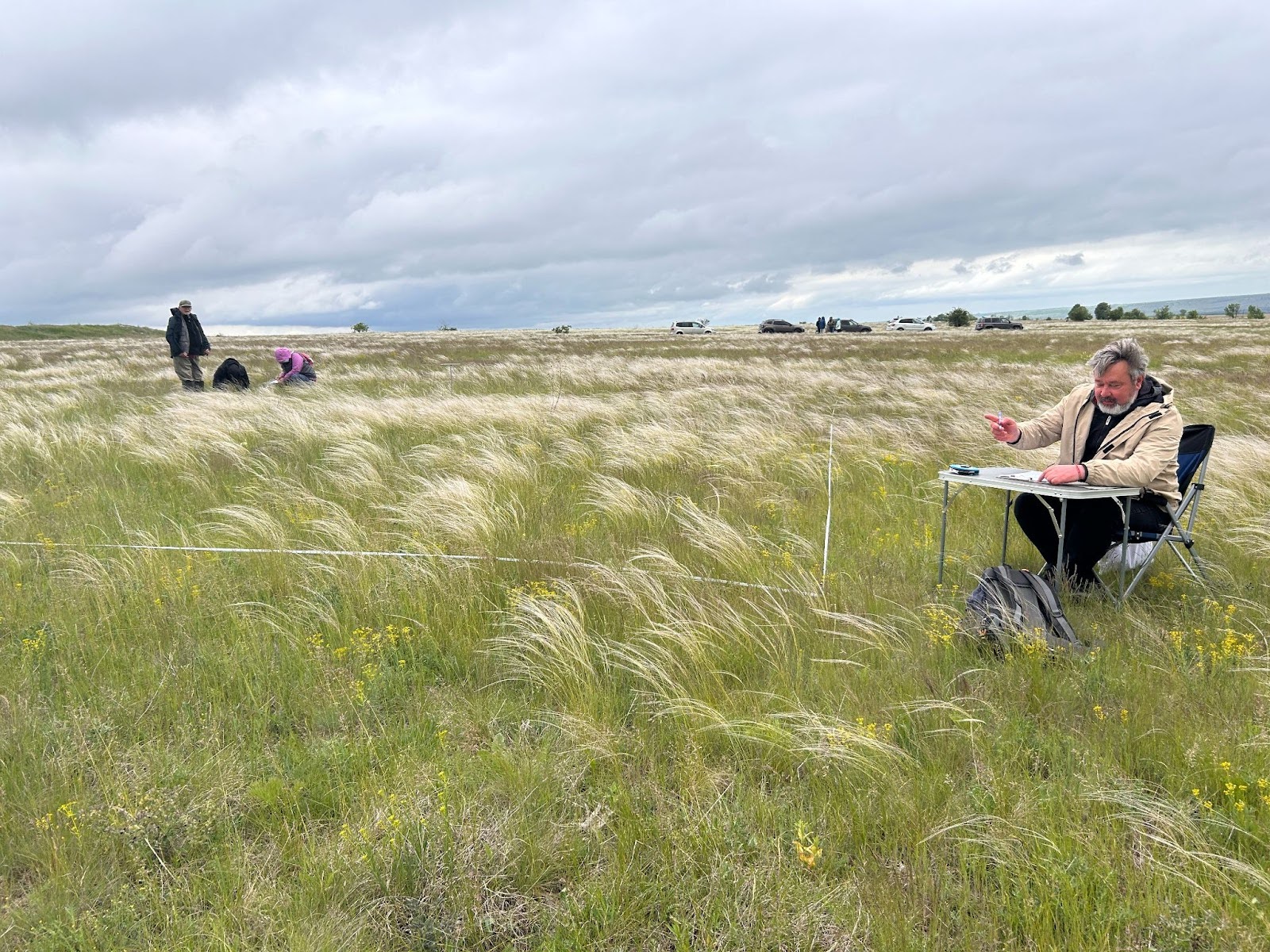
It is quite possible that wildlife will eventually recover – in one way or another – in most areas not put to economic use. However, unfortunately, this optimistic assessment does not apply to most rare species, which live in areas of very limited size, and which require specific habitat conditions. They are also quite small in number and lack external “donor” populations that can help to restore species populations through dispersal and wildlife corridor.
One positive exception appears to be the bobak marmot, or steppe marmot (Marmota bobak), whose numbers have soared in the occupied Luhansk region due to the absence of hunting. Another is, of course, renewed migrations by Danube sturgeon to the section of the Dnipro restored by the disappearance of the Kakhovka Reservoir, which we have previously reported. But such examples still run counter to the general trend.
What needs to be done to save Ukraine’s endangered species
A pragmatic answer to the question of where to start the necessary measures to preserve rare species is to work on the development of monitoring, which in turn is also very limited in its capabilities for now. New monitoring systems/programs should be developed using remote methods (satellite monitoring, drones, camera traps, analysis of DNA shed into species’ environments (e-DNA), etc.). This kind of approach will remain relevant for many decades, since the huge scale of mined areas will prevent biologists from beginning serious work even after the end of the war.
In addition, data collected in the pre-war period needs to be collected and digitized, as well as made accessible in the public domain. For example, in one recently completed project, the Ukrainian Nature Conservation Group brought together a team of staff from reserves that are now in occupied territories. Together, they collected and published over 130,000 records of observations, mainly of rare species.
Most important of all, of course, is the creation of new nature conservation areas. Regardless of the military and political situation, it is evident that the total area of territories allocated for the conservation of rare species in Ukraine has been significantly reduced. This means that on top of the destruction caused by military action, conditions for wildlife conservation are also affected by a lack of proper protection and management. In spite of the ongoing war, documentation is now being prepared for the creation of new nature conservation areas (including in occupied parts of Ukraine). Recommendations by scientists and government bodies to significantly increase the total area of nature conservation zones have also been approved by the Verkhovna Rada Committee on Environmental Policy and Nature Management, while committee hearings on the issue were held in October 2024. However, this initiative has little support at local level, and as yet there is no sign of new reserves being created.
Unfortunately, threats to biodiversity do not end with military action and are likely to worsen over time. A 2021 IUCN thematic report, titled “Conflict and Conservation: Nature in a Globalised World,” focuses less on the impacts of warfare itself and more on the impacts of changing settlement patterns and the construction of housing and infrastructure. The mass displacement of people and post-conflict projects to rebuild infrastructure can exacerbate environmental risks. The report notes that displaced people often put pressure on natural resources near protected areas, while restoration projects often ignore the needs of nature. In many cases, the rush for a “quick recovery” and the desire to secure aid has led to the destruction of ecosystems. For this reason, the IUCN recommends integrating conservation approaches into post-war planning to avoid repeating mistakes made by other countries.
Translated by Alastair Gill
Main image: Normann’s birch mouse (Sicista lorigera). Source: photo by Mykhailo Rusin

